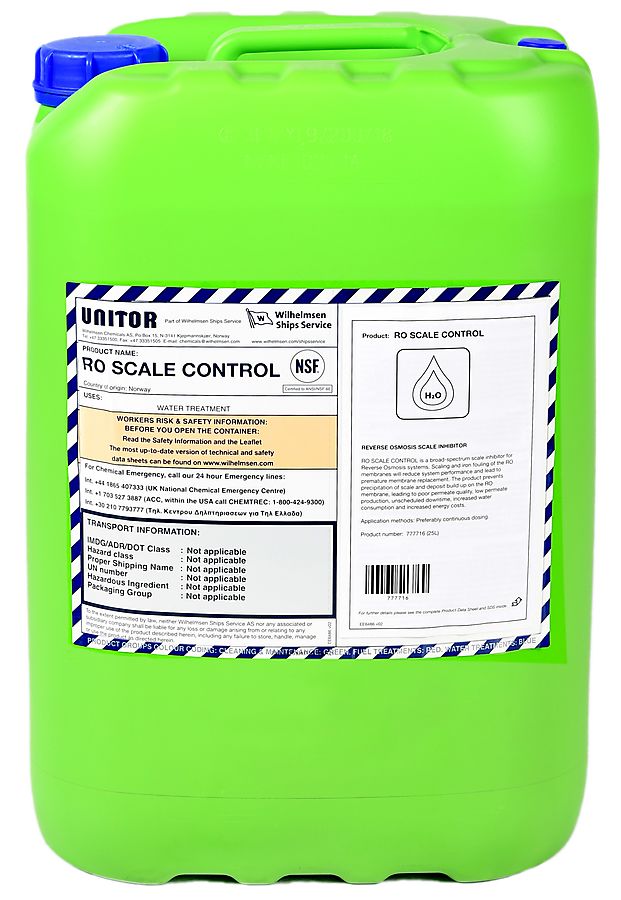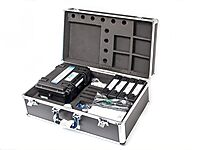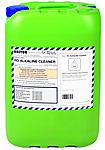


Last updated: 30/04/2025 05:19:04
RO SCALE CONTROL 25 LTR
Product Code
- Product group:
- 648
- Product number:
- 777716

NALFLEET™ RO Scale Control™ is a broad spectrum scale inhibitor for Reverse Osmosis systems and membranes.

Product information
This product supersedes product no: PC-191.11R, 777199
Scaling and iron fouling of the RO membranes will reduce system performance and lead to premature membrane replacement. Precipitation of scale and deposits build up on the RO membrane, which leads to poor permeate quality, low permeate production, unscheduled downtime, increased water consumption and increased energy costs.
Features
- Effective on a broad range of scale forming compounds
- Cost effective dose rate
- Compatible with wide range of RO membranes
- Liquid formulation
Benefits
- Maintains RO performance
- Keeps membranes free of scales
- Certified by NSF in accordance with Standard 60
Specification
General
| Invent Hazard Material (IMO/EU) classification | C-49 |
|---|
Physical properties
| Colour | Pale yellow |
|---|---|
| Density [g/ml] | 1.36 - 1.40 |
| Form | Liquid |
| Materials compatibility | Polyamide membrane elements including TFC membranes, Stainless Steel 304, CPVC Piping, Polyethylene, Polypropylene, Plasite 4300, Plasite 7122 |
| Odour | Slight ammoniacal |
| pH | 10 -11 (1% Solution) |
Technical data
| Not Compatible | Brass, Viton, Polyurethane, Neoprene, Buna-N, EPDM, Hypalon, O-rings are acceptable for static applications. If fitting is opened, O-ring must be replaced. |
|---|
Approvals
- NSF International Certifies that this product conforms to the requirements of NSF/ANSI Standard 60 - Drinking Water Treatment Chemicals - Health Effects. Maximum use level according to NSF approval: 15 mg/lit.
- Approved by The Norwegian Food Safety Authority
Safety Data Sheet (SDS)
Documents
Directions for use
NALFLEET™ RO Scale Control shows excellent performance against the following scale forming compounds: - calcium carbonate- calcium sulphate - barium sulphate - strontium sulphate - calcium fluoride - silica and iron.
NALFLEET™ RO Scale Control is used when the silica level in the brine is less than 185 mg/l at a brine pH of 7.5 and temperature 25 °C (77 °F). NALFLEET™ RO Scale Control conforms to the requirements of NSF/ANSI Standard 60 - Drinking Water Treatment Chemicals -Health Effects.
Dosing and Control
Typical dose rate is 5 to 15 mls/m3 flow rate. NALFLEET™ RO Scale Control should be fed continuously to minimize precipitation of scale and fouling of RO and nano-filtration membranes. It is recommended to operate the dosing pump with the highest possible frequency and to adjust the dosage by adjusting the pump stroke to ensure membrane protection. The feed point location should be as close to the RO membrane as practical but one that ensures good mixing with the feedwater prior to entering the RO system. Typically, this is before the cartridge filters. It is preferred to feed NALFLEET™ RO Scale Control neat via a closed feed system to prevent contamination from foreign material (a closed feed system being defined as a system in which fluid is moved from a closed storage vessel into a treated media without exposure to the atmosphere, except through normal venting or pressure relief devices).
NALFLEET™ RO Scale Control can be diluted using RO permeate (only) following these guidelines:
- Use RO permeate for dilution.
- Prepare a fresh antiscalant solution every 3-5 days.
- Inspect the antiscalant day tank before adding the new solution. If needed, the antiscalant tank should be cleaned prior to filling.
- Dilution rates up to a factor 10 are typically applied. Dilution factors higher than 10 will require more attention with respect to the condition of the antiscalant tank (cleaning) and preparation of a new solution (every 1-3 days).
- NaOH can be added to the dilution to increase the pH to 10-11. This is especially recommended for warm environments to prevent bio-growth. NALFLEET™ RO Scale Control dosage is dependent on feedwater chemistry, membrane type, and system operating parameters (e.g. recovery, temperature and pressure).






